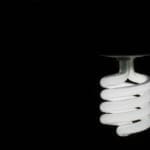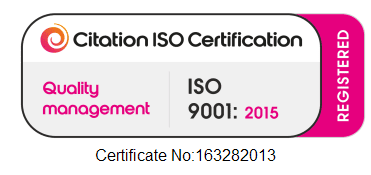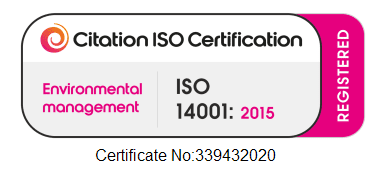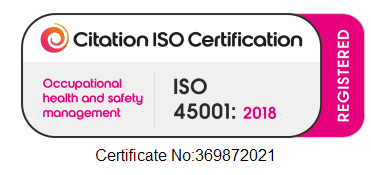Simple Ways to “Green” Your Warehouse
There are several benefits to “going green” in your warehouse: from reducing utility bills and increasing sustainability to reducing your carbon footprint and providing your employees with an eco-friendly business they are proud to be a part of. For many business owners, though, thinking about going green is more than a little overwhelming. Knowing where to start and what upgrades will have the most impact challenges many owners. Having been through this process ourselves Hub Packaging can help you implement these changes to your operation. We can also discuss our Pre-Cycling initiative with you – an innovative way to reduce costs and waste from your packaging use.
The good news? There are several ways your warehouse can go green, and there is no “right” or “wrong” way to do it. Even making small changes to make your warehouse more environmentally friendly is a big step in the right direction. Going green doesn’t have to be difficult. Here are a few simple ways your warehouse can go green.
Upgrade Your Lighting
Changing your lighting is one of the easiest ways to make any warehouse more environmentally friendly. Switch out your old-fashioned light bulbs for more eco-friendly options, like LED. While they may cost a bit more upfront than traditional light bulbs, they last significantly longer and use less energy. You will save on your electric bill while taking a big step toward lowering your impact on the environment. In large warehouses, this one simple change can make a huge difference.
Invest in Energy Efficient Equipment
If you own a warehouse, chances are you work with equipment that runs on electricity or petroleum. As this equipment needs to be replaced, look for options that are more energy-efficient. Pay close attention to things like gallons per hour, miles per gallon and how much wattage a particular item uses. When upgrading, make sure that the new product still functions as you need it to and keep up with regular maintenance to ensure maximum efficiency. Keeping up with maintenance also extends the life of many products and reduces the waste of needing to frequently upgrade.
Think About Your Packaging
Using less packaging cuts down on waste. More efficient packaging also weighs less and costs less to ship. Consider switching from traditional packing materials to products that are biodegradable. While packing materials made from synthetic plastics can take hundreds of years to break down in landfills, biodegradable materials degrade within just a couple of years. Many biodegradable materials are also compostable. All in all, making your packing more efficient and switching to biodegradable packing materials significantly reduces waste and decreases your carbon footprint.
Recycle
If your warehouse doesn’t already recycle, start now. Warehouses are typically well-suited to recycling and making a conscious effort to do so is a huge step in going green. Cardboard and paper make up the vast majority of waste in many warehouses, and if you are not recycling efficiently, you could be sending way more waste to the landfill than necessary. Set up an effective recycling plan and stick to it.
Reuse
Warehouses can reuse many materials. Several products can be used several times. While not commonly reused, packing materials are costly to manufacture. Opting to recycle them saves money and reduces the environmental impact of manufacturing. Whether you reuse packaging sent to you by suppliers or you encourage customers to return packing for reuse, doing so is a small step toward reducing your business’ impact on the environment.
Make Sure the Facility Is Properly Insulated
Poor or insufficient insulation allows warmed or cooled air to escape from your building. This drives up your heating and cooling bills and increases your facility’s impact on the environment. Make sure your warehouse is properly insulated to help keep climate-controlled air inside where it belongs. In addition to keeping your employees comfortable, doing so reduces wear and tear on your HVAC system and reduces your energy bills.
Contact an HVAC Expert
Your heating and cooling system uses a lot of energy. Hiring an HVAC expert to audit the system could help you save on your utility expenses. If the system is not operating as efficiently as it should, it could be driving up your monthly bill and wasting a lot of energy. An experienced HVAC technician will help you identify inefficiencies with the system and recommend changes that could save you money and reduce your environmental impact.
Build Up Instead of Out
As your warehouse expands, consider practices and equipment that allow you to build upward instead of outward. Building upward requires less horizontal space, and doing so could allow you to put off relocating to a larger warehouse. Expanding upward allows you to maximize the space you already have.
Get a Large Fan
Destratification fans are huge fans that can improve heating and cooling efficiency in your warehouse. They work by circulating air throughout the entire warehouse, and they create a much more even temperature. This cuts down on energy usage and heating and cooling bills.
Employ Green Business Strategies
While many changes can be made in a warehouse environment, there are also several ways to go green in your office and throughout the rest of your business. One of the best ways to do this is to invest in technology that allows you to go paperless. When you do need to use paper, look for recycled materials. Implement a system for recycling as much waste as possible. Office waste, warehouse waste, glass and plastic bottles, etc. can all be recycled.
Upgrade to more energy-efficient electronics, and switch them off when they are not in use. Since many devices and electronics draw power even when they are turned off and not being used, it’s also a good idea to unplug them. Install solar panels to generate electricity and use solar-powered chargers for your company’s electronics.
How today’s warehouses are implementing green initiatives to cut costs
As warehouses seek ways to cut operational costs while maintaining productivity and efficiency, many are looking to green initiatives as a means to reduce waste and lower energy costs. Eco-friendly warehouse initiatives can range from the simple to the exceedingly complex, but implementing green innovations holds tremendous promise both in terms of cost reductions and other non-financial perks, such as branding and vendor relations.
Below are a few green initiatives today’s eco-minded warehouses are implementing to lessen their environmental footprint and cut costs.
1. Eco-Friendly Lighting Alternatives
Lighting is one of the most cost-effective investments for warehouse operations, offering savings of up to 80 percent compared to traditional lighting technologies. While there’s an upfront cost associated with replacing traditional lighting with LEDs and other energy-saving alternatives, the cost savings over time is well worth the investment. LEDs and other environmentally friendly lighting alternatives cost more upfront, but they also take less energy to run and don’t need to be replaced as often — meaning you’ll also save on labor costs by not having to replace lighting as frequently.
2. Warehouse Identification
Warehouse identification is a valuable investment for warehouses, providing data that helps to reduce waste and streamline operations through more efficient picking and stocking. Options such as multi-level warehouse rack labels make it quicker and easier for workers to identify the proper racks and shelves, speeding order fulfillment and cutting down on labor costs, while hanging warehouse signs and long-range retroreflective signs and labels make overall navigation seamless.
3. Optimized Warehouse Layouts
Data gained through asset tracking can be used to design optimized facility layouts, which in turn can cut down on labor and energy costs by making fast-moving stock more accessible and reducing travel time throughout the facility. There are a variety of methodologies for maximizing space utilization and organizing the facility layout to reduce the time it takes to stock shipments and fulfill orders, which improves labor efficiency and boosts vendor and customer relationships through better service delivery. By making better use of vertical space, warehouses can store more stock, directly impacting the bottom line.
4. Water-Saving Initiatives
While most warehouses consume much more electricity than they do water, water-saving efforts are still a worthy green initiative for today’s warehouses. From installing low-flow toilets and faucets, you can cut down on water waste from everyday use, whether from toilets and sinks in restrooms or hoses used for cleaning and maintenance.
5. Energy-Efficient Equipment
Warehouses have more options today than ever when it comes to equipment such as forklifts. As the industry is increasingly aware of environmental concerns, more warehouses are choosing to invest in electric forklifts instead of their gas-powered counterparts.
“The use of electric forklifts eliminate tailpipe emissions produced by gas forklifts which can result in improved employee health and have less impact on the environment,” explains PBD Worldwide. “By using electric forklifts, the cost of fuel is eliminated which results in estimated savings of $26,000 in propane over 5 years of using a 5,000 lb capacity forklift 6 hours a day, 5 days a week.”
6. Recycling Programs
Warehouses can also cut costs and reduce their environmental impact by implementing reuse and recycle initiatives. Most warehouses already reuse items such as pallets and crates or totes, but it’s worth conducting an audit to determine what items your facility continuously disposes of and if there are reusable alternatives to reduce waste. Some warehouses are minimizing waste by reusing packaging materials such as cardboard and packing rather than disposing of it when feasible. Waste that can’t be reused should be recycled when possible.
Why Going Green is an Investment That Pays Off
Going green requires an upfront investment, but it’s an investment that more warehouses are finding worth the effort as cost savings continue to be realized for years after initial implementation. In some cases, going greener is simple and even free. It doesn’t cost much (if anything) to start a reuse and recycle initiative, for example.
Other efforts, such as energy-efficient lighting alternatives and equipment, come with a larger initial investment but promise substantial savings for years to come. If your warehouse operation isn’t as eco-minded as it could be, perhaps it’s time to conduct an audit and identify eco-friendly initiatives that can save you money and benefit the environment.
















